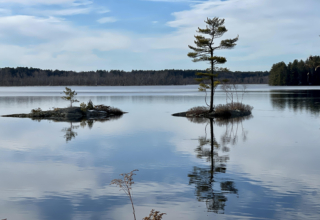
Gary Quehl and William Bergquist
[For the complete report on this project see The Sages Among Us: Harnessing the Power of Civic Engagement, available as a link through the LPC Bookstore.]
The demographic projections are clear (at least in the United States) with regard to the emergence of and need for Theory S leadership. The US population has pushed beyond 300,000,000, and the emergence of an unprecedented aging population is the lead story. The principal cause are Baby Boomers, the second largest single age cohort in US history—some 78 million—representing 28% of the US population (Endnote 1). The first members of the Baby Boom Generation (born in 1946) became 65 in 2011, and the youngest cohort (born in 1964) will become 65 in 2029 (Endnote 2). By 2030 nearly one in four US residents will be 60 or more, including the “old-old” cohort (85+) which is increasing most rapidly (Endnote 3)
One impact of this population shift is that the very definition of “old” is being transformed. “Old age” traditionally has been considered a time of physical and mental decline, but there is growing evidence this need not happen for many years. Those 65 and over in the next 20 to 30 years will be more mobile and healthier, will continue to enjoy relatively high levels of physical and cognitive functioning, and will remain actively engaged in various life pursuits well into their 70s, 80s, and even 90s (Endnote 4).
Major improvements in health and life expectancy are the primary reasons. Over the past century more than thirty years have been added to the average life span of Americans. At the beginning of the 20th Century life expectancy at birth was 47.3 years. In 2010 it was estimated to be 77 years for babies born in 2006 (Endnote 5) and is expected to be 82 years in 2050 (Endnote 6). Life expectancy at age 65 is now 83. White women continue to have the longest life expectancy, followed by African-American women, white men, and African-American men (Endnote 7). What’s more, eleven of the 15 top causes of death have declined since 2006, and California has the fifth lowest death rate in the nation (Endnote 8).
With their prolonged life expectancy, senior citizens face three main challenges. One is to sustain their health through exercise, nutrition, preventive care, meditation, and spiritual development. A second is the need to accumulate enough money to live an additional decade or two. Yet a third is to fill their lives with purpose, structure, affiliation, growth, and meaning (Endnote 9). For some seniors this third challenge will be pursued through leisure activities, and for others it will be met through volunteering and community service. Still others will seek part-time paid employment and many, it seems, will engage in an entirely new category of work in the nonprofit and private sectors—the encore career. The encore career is not a transitional retirement job or a bridge between the end of real work and the beginning of real leisure. It’s an entirely new stage of life and work—a destination and a category of work unto itself (Endnote 10).
The prospect of a huge age group like Baby Boomers remaining in the nation’s work force would normally create enormous intergenerational friction by denying jobs to the next age group. But this isn’t the case. The Gen Xers (born between 1964 and 1977) total a mere 45 million (16% of the US population), and this means a deficit of about 30 million part-time and full-time jobs that can be filled by Baby Boomers who may want them when the economy improves (Endnote 11).
This brief essay on demography ends with two key questions: To what extent will increased lifespan be “good” years—longer life while being active and free of disability? Will increased numbers of older people with more education and longer lives choose to spend their remaining years contributing to the larger society? (Endnote 12).
___________________
Endnotes
1 Planning for an Aging California Population: Preparing for the “Aging Baby Boomers, ” the California Strategic Plan on Aging Advisory Committee, 2004.
2 Jennifer Cheeseman Day, Population Profile of the United States, US Census Bureau, 2010.
3 Frank Hobbs, The Elderly Population, Population Profile of the United States, US Census Bureau, 2010.
4 Planning for an Aging California Population: Preparing for the “Aging Baby Boomers,” the California Strategic Plan on Aging Advisory Committee, 2004.
5 Healthy People 2010 and Steps to a Healthier US: Leading Prevention, US Department of Health and Human Services, 2011.
6 Jennifer Cheeseman Day, Population Profile of the United States, US Census Bureau, 2010.
7 Chapter 2 Demographics, The Mereck Manual of Geriatrics, 2008.
8 Life Expectancy Reaches New Record, Web MD, Better Information, Better Health, 2011.
9 Statistics and Aging Information, The Senior Source, Senior Citizens of Greater Dallas (Undated).
10 Marc Freedman, Encore: Finding Work that Matters in the Second Half of Life, Public Affairs, 2007.
11 Caela Farren, Masterworks Mainframes to iPods—A Multi-Generational Workplace, 2007.
12 Trends in the Elderly Population, AGS Aging in the Know, 2005.
_________________________
Issue One: The Investigation of Theory S
Setting the Stage for Theory S: III. From Aging to Saging
Setting the Stage for Theory S: IV. The Rise of Civic Engagement
Emergent Sage Leadership: Interview of Christine Kelly
Senior Sage Leadership: Interview of Norman Westmore
Sage Leadership Project: Vision, Purposes and Methodology
Download Article















